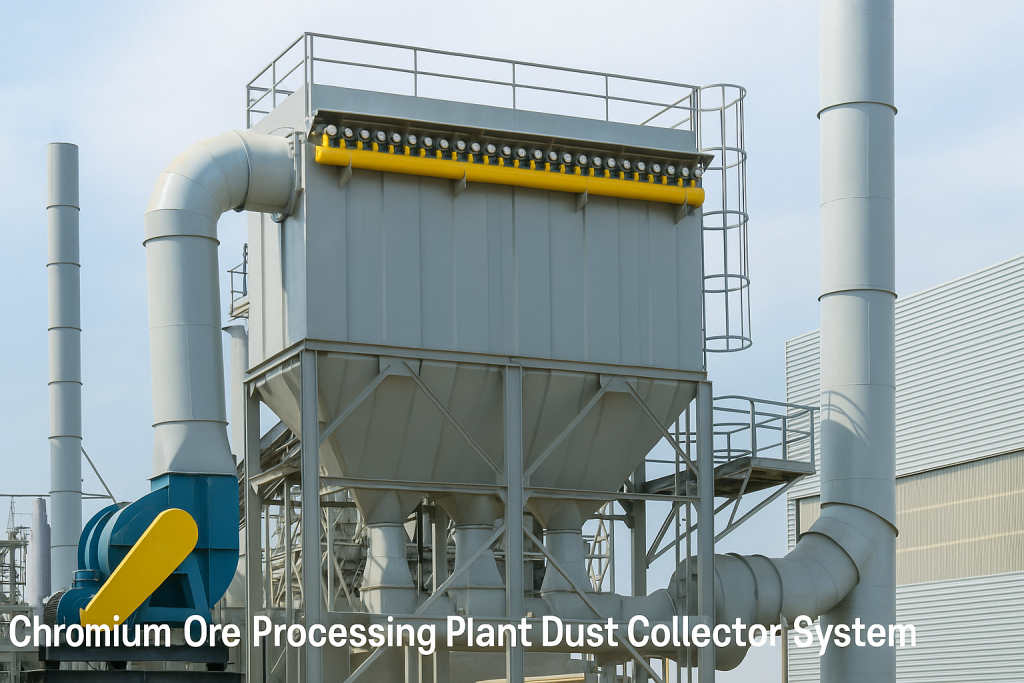Chromium ore processing involves multiple stages that release fine, dry, and often abrasive dust into the production environment. These dust particles, generated during crushing, drying, grinding, screening, and roasting, can lead to significant health risks, equipment wear, and regulatory compliance challenges if not properly controlled.
Key dust emission points include:
The airborne chromium-laden dust requires targeted collection systems with high filtration efficiency, abrasion resistance, and stability under varying temperature and humidity conditions.

Dust collection systems for chromium ore operations are typically based on pulse-jet baghouse collectors, engineered with segmented chambers for offline cleaning and equipped with optimized airflow design to reduce turbulence. The selection of filter bags is critical to maintain system performance and ensure durability under continuous operation.
Key factors include:
The filter media must withstand both mechanical abrasion and elevated dust loading, while providing consistent permeability.
Recommended filter bag options include:
| Material | Key Properties | Typical Application Points |
|---|---|---|
| Aramid (Nomex) | Heat-resistant (up to 204°C), moderate chemical resistance | Drying and milling sections |
| PTFE-laminated PPS | Superior chemical resistance, anti-stick, handles corrosive gas | Roasting and kiln off-gas handling |
| Acrylic | Cost-effective, good hydrolysis resistance | Material handling and ambient dust control |
| Fiberglass with PTFE finish | High-temperature and fine dust filtration, extended life | High-load dust zones with fine chromium dust |
Finishing treatments such as ePTFE membrane, calendaring, or singeing help improve dust release and prevent clogging from sticky chromium-rich particles.
System performance should be routinely assessed via:
Proper cleaning cycle adjustment and timely bag replacement extend service life and help maintain emission compliance.
Understanding the Risk: Dust Explosion Fundamentals Dust explosions represent one of the most serious safety hazards in industrial
Introduction Efficient particulate collection is central to modern industrial air pollution control, making the baghouse a familia
By Omela Filtration — Industrial Filtration Experts 1. Industry Background and the Real Problem In pulse-jet dust collector syst